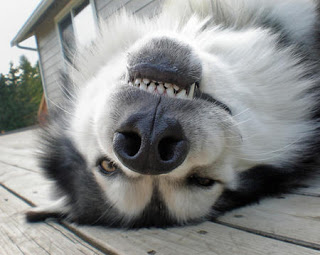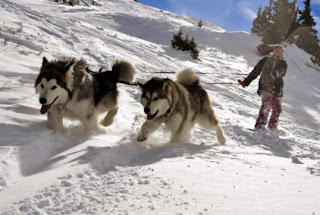
Facts about Gorillas:
The first thing that strikes one about gorillas is their massive size. The classification of their species is still under much debate. The short trunk, broad chest and shoulders may make these gorillas seem frightening to some, but in reality, these can be shy in their behavior as well. Of course, as is the case with most animals, these don't usually cause any trouble unless provoked. The Western Lowland gorilla, the Eastern Lowland gorilla, the Mountain gorilla and their subspecies can be safely classified as species of the gorilla.
On an average, gorillas have a height of 165-175 cm as far as adult males are concerned and weigh around 140-200 kg. Female adult gorillas can have a height of about 140 cm and weigh around 100 kg. A baby gorilla can weigh about 4 ½ pounds.
The habitats of these mighty creatures face threat due to the invasion of man in these areas. The loss of forests has largely lead to the depletion of the numbers of these species. In most countries, one can find like-minded people who urge others to maintain such forests and help prevent these areas from encroachment.
As mentioned earlier, the gorillas are actually shy creatures but these also defend their families fiercely. Gorillas can be said to be completely devoted to their families and members of their groups. A group can have up to 30 members. It always has one older male along with females and young gorillas as well. A silverback gorilla always heads groups of gorillas; this is an adult male gorilla that is more than 12 years of age and very dominant in its nature, which is probably why, it remains to be a perfect group leader! The name silverback stands solely because such male gorillas have a very characteristic patch of silver hair on their back.
Using their knuckles to walk around, these generally continue to wander around 10 to 15 miles. They also prefer to stick to their group and often use new branches and grass to create a comfortable area to rest; at dusk.
The diet of a gorilla consists of fruits, stems, leaves, barks, vines, bamboo and a variety of such things as the gorillas have a large appetite! Most of the gorillas can be termed to be herbivorous and are also dependent on the area they habitat, to procure their food. It is said that the Western Lowland gorillas include a lot of fruit in their diet; this is because these are readily available within the lowland areas. But due to the scarcity of food, gorillas also eat snails, insects and slugs to satisfy their hunger.
Gorillas use a wide range of facial expressions to communicate with each other. This is probably why Koko, has also been able to pick up the sign language and use her face and hands to the best of her ability. They sometimes protrude the tongue forward, use various vocal sounds, slap their chest and even laugh when they are tickled. The way a gorilla may express his/her feelings maybe on the similar lines of a human; although they cannot actually use human speech to communicate.
A female gorilla can give birth when she turns ten years old. Males generally breed at the age of 12 or 15 years. Females produce a single young gorilla, which become independent after 3 ½ years.
Today, the gorillas are struggling for their survival. These are being hunted down, for their meat, to use their heads as decoration pieces, to sell the infants (this can result in an entire group being threatened) and for such other acts caused by the human race. I think it is high time people wizen up to the importance of these beings for the entire ecological balance in nature and use one's intelligence for the better.




